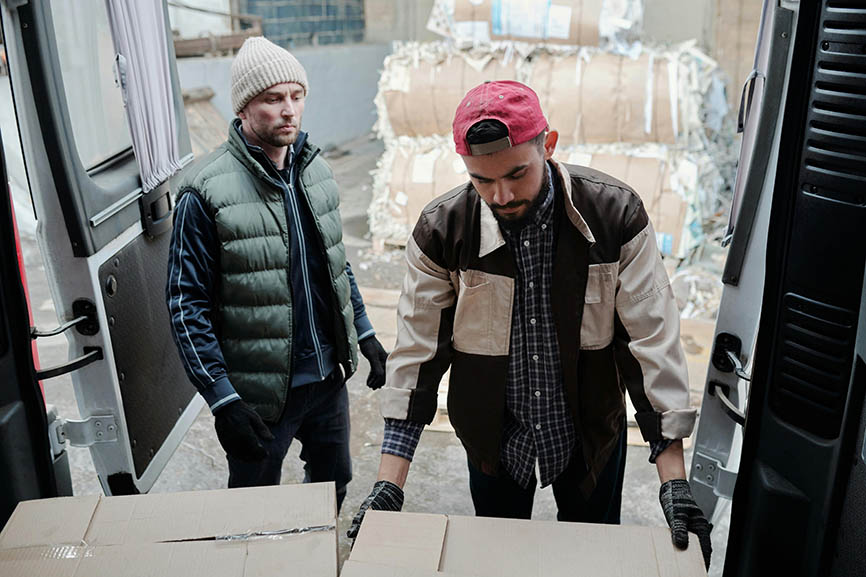 |
| Moving and transporting heavy yard equipment can be daunting, especially if unprepared. Whether relocating to a new home, transporting your machinery for maintenance, or lending equipment to a friend, ensuring these items' safe and efficient movement is crucial. This guide will provide expert tips and practical advice to make the process smoother and less stressful. |
| Assessing the Equipment |
| Before you begin the moving process, assessing the equipment you need to transport is essential. Different types of yard equipment, such as lawnmowers, tillers, chainsaws, and leaf blowers, have unique requirements for safe handling and transportation. Take the time to evaluate each piece of equipment to determine its weight, size, and any specific precautions needed for moving it. |
| Gathering the Right Tools and Materials |
| You'll need the right tools and materials to move heavy yard equipment safely. Basic moving supplies, such as sturdy boxes, packing tape, bubble wrap, and moving blankets, are essential. Additionally, you might need specialized equipment like ramps, dollies, and straps to secure and transport your machinery. These tools will make the moving process more efficient and reduce the risk of damage. |
| Preparing the Equipment |
| Proper preparation of your yard equipment is a crucial step in the moving process. Start by cleaning each piece of equipment to remove dirt, debris, and grass clippings. That prevents messes during transport and allows you to inspect the equipment for any damage or maintenance needs. Drain the fuel and oil for fuel-powered machines to avoid leaks and spills. Remove any attachments or accessories and pack them separately to prevent damage. |
| Securing Moving Parts |
| Yard equipment often has moving parts that can shift or cause damage during transport. Secure these parts by taping or tying them down. For example, lock the handles of a lawnmower in place or secure the blades of a chainsaw with protective covers. This step ensures that the equipment remains stable and reduces the risk of injury during the move. |
| Using Ramps and Dollies |
| Heavy yard equipment can be challenging to lift and carry. Using ramps and dollies can make the process much more manageable. Ramps are useful for loading and unloading equipment into a truck or trailer. Ensure the ramps are securely positioned and follow proper lifting techniques to avoid injury. Dollies can be used to move equipment across flat surfaces with minimal effort. Secure the equipment to the dolly with straps to prevent it from shifting during transport. |
 |
| Transporting heavy yard equipment is easier with ramps and dollies |
| Loading the Equipment |
| Strategic placement is key when loading heavy yard equipment into a vehicle. Position the heaviest items first, placing them closest to the front of the vehicle. This arrangement helps maintain balance and stability during transport. Use straps and tie-downs to secure the equipment to the vehicle, ensuring it doesn't move or tip over during the journey. If you're using a trailer, distribute the weight evenly and avoid overloading it. |
| Protecting the Equipment |
| Protecting your yard equipment during transport is essential to preventing damage. Use moving blankets or padding to cover delicate or protruding parts. Bubble wrap can be used to protect smaller components or accessories. Secure the protective materials with packing tape to ensure they stay in place. These precautions will help keep your equipment in good condition throughout the move. |
| Hiring Professional Movers |
| When relocating heavy yard equipment, the complexity of the task can be significantly reduced by hiring professional movers. In regions like Florida, where distances between cities can be vast, it becomes essential to engage long-distance moving experts. These professionals have the tools, expertise, and experience to ensure your items are handled safely and efficiently. Opting for such specialized services in Florida protects your valuable equipment and saves you considerable time and effort. This focused approach allows you to dedicate more attention to other critical aspects of your move, streamlining the entire process. |
| Driving Safely with Heavy Loads |
| Transporting heavy yard equipment requires careful driving to ensure safety on the road. When driving a vehicle loaded with heavy equipment, maintain a safe speed and avoid sudden stops or sharp turns. Be mindful of the increased braking distance needed for heavier loads. If possible, take routes with minimal traffic and avoid rough or uneven roads that could jolt the equipment. Regularly check the equipment and straps during the journey to ensure everything remains secure. |
| Unloading and Setting Up |
| Once you've reached your destination, carefully unload the equipment, using ramps and dollies as needed. Take your time to ensure the equipment is safely removed from the vehicle. Reassemble any attachments or accessories and inspect the equipment for any damage that may have occurred during transport. Before using the equipment, ensure it's in proper working condition.
|
 |
| Once you've reached your destination, carefully unload the equipment |
| Maintenance After the Move |
| Routine maintenance is a good idea after moving heavy yard equipment. Check for any signs of damage or wear and tear that may have occurred during transport. Refill fuel and oil levels and ensure all parts and attachments are properly secured if necessary. Regular maintenance will help keep your equipment in top condition and ready for use. |
| Conclusion: Transporting Heavy Yard Equipment Seamlessly |
Moving and transporting heavy yard equipment doesn't have to be a stressful experience. You can ensure your machinery's safe and efficient movement with the right preparation, tools, and techniques. Remember to assess your equipment, gather the necessary tools, prepare and secure the machinery, and protect it during transport. If needed, don't hesitate to hire professional movers, especially if you're dealing with long-distance relocation. Following these tips can make the process smoother and keep your yard equipment in excellent condition for years.
|
| Inside Van Image by Lê Minh |
| Women with Dollie Image by Jay-r Alvarez |
| Men Unloading Boxes Image by Tiger Lily |